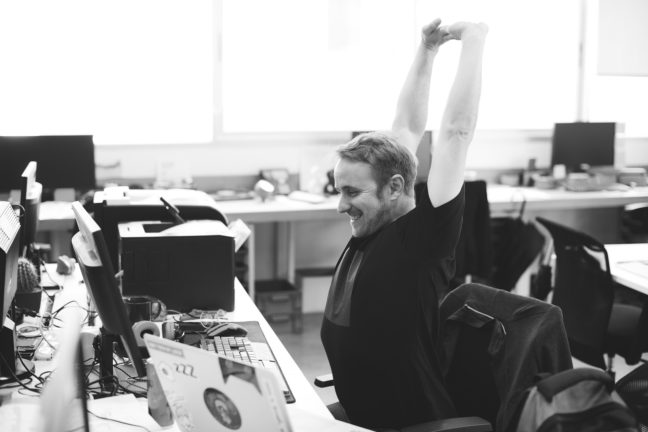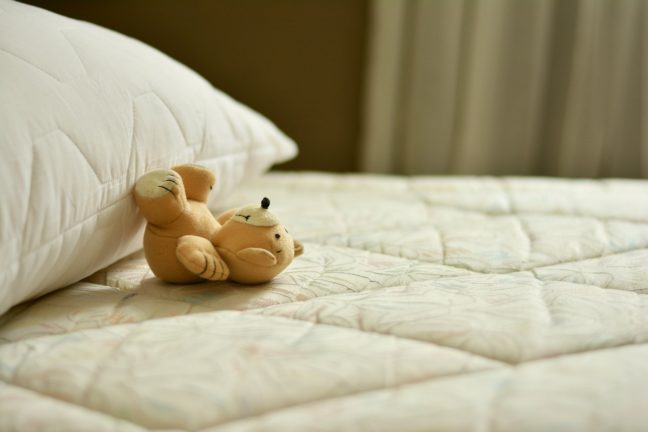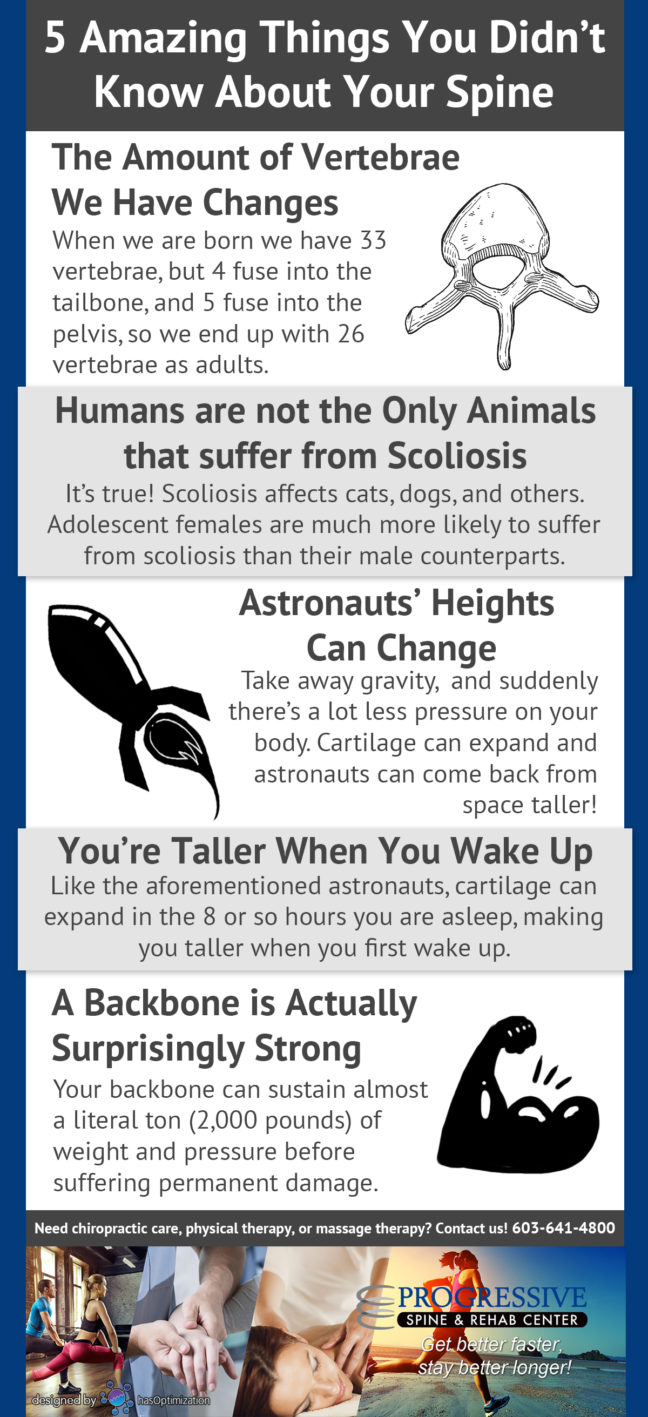Your spine is an amazing piece of natural construction. While many times we focus upon what goes wrong with the spine, we often overlook just how amazing the spinal column is. Check out these five fantastic facts about the spinal column.
1. The Amount of Vertebrae we have Changes Throughout our Life
When we’re born, we have 33 vertebrae total. Eventually, 4 fuse to create the tailbone, and 5 fuse to create the pelvis. As adults, we usually end up with 26 vertebrae. Still, some people may have a rare sixth lumbar vertebrae — something like 10% of the population can have this extra vertebrae.
2. Humans are Not the Only Animal that Suffer from Scoliosis
Many animals suffer from scoliosis, including dogs and cats. We’ve even seen x-rays of snakes and fish that also suffer from scoliosis. Scoliosis is a sideways curvature of the spine.
3. Astronauts’ Heights Change
When out in space, astronauts don’t have to contend with gravity. Because of this, the cartilage between vertebrae can expand, meaning when they get back to Earth, they may be taller than when they left!
4. We’re Taller When We Wake Up
Just like astronauts, when we’re lying in bed at night, our spines don’t have to fight against the downward push of gravity. Because of this, when you’re sleeping some eight hours or more, the cartilage can expand. When you get up in the morning, you may be a bit taller than when you go to sleep at night.
5. Your Back Bone is Very Strong
It might not seem like it if you’re in pain, but the human skeletal system is incredibly strong. Your back bone can sustain almost a whole ton (2,000 lbs) of pressure before showing any signs of permanent damage. That’s a durable bone!





